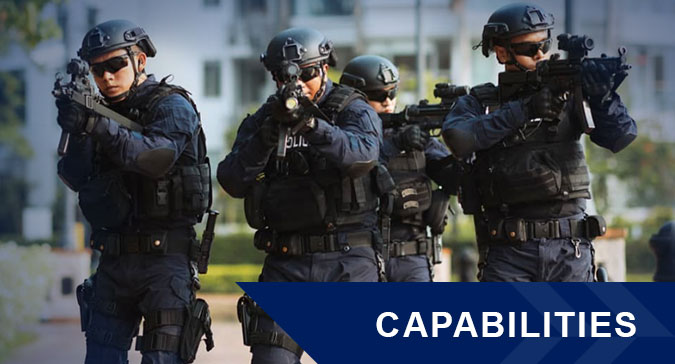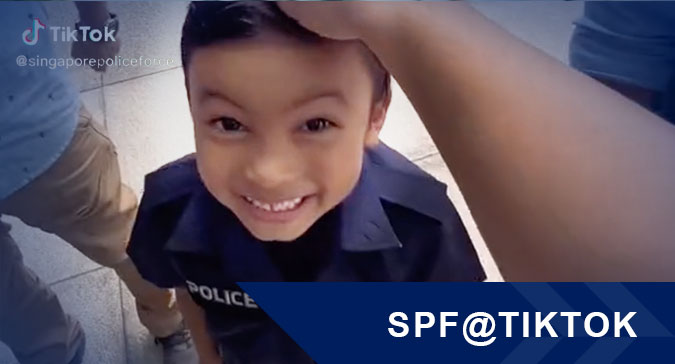From affection to lies and wrath – how forensic science and dogged investigative work brought a murderer to justice.
By: Domnic Dass

Have You Seen My Colleague?
July 2016 – 31-year-old engineer Ms Cui Yajie had been absent from work for three days and was also not at her residence, prompting her colleague to file a police report.
Examining the rented room where Cui stayed, officers from Clementi Division found it undisturbed, suggesting that she’d never returned home. After checking with hospitals and the Immigration and Checkpoints Authority, they concluded that Cui had neither been admitted for medical care nor left the country.
The case was then handed over to the Criminal Investigation Department’s Special Investigation Section (SIS). SIS officers found out from Cui’s colleague that she had a boyfriend named “Leslie” who worked at a dry-cleaning company. The colleague also recalled that on the last night Cui was seen in the office, she’d had a heated argument over the phone with “Leslie” about money.
Cui’s colleague added that when she realised that Cui was nowhere to be found, she’d called “Leslie” to find out if he knew where she’d gone. He had denied any knowledge of Cui’s whereabouts.
Too Many Lies to Remember
SIS officers also interviewed Cui’s landlord, who recalled her leaving her room on the morning of 12 July 2016. She’d been arguing with someone over the phone.
After meticulously trawling through CCTV footage from the MRT stations near Cui’s residence, officers discovered that Cui had alighted at Joo Koon MRT Station and boarded a car that was registered to Leslie Khoo Kwee Hock.

Officers interviewed Khoo as he was the suspected last point of contact. Khoo denied knowing Cui’s whereabouts, stating that he’d last seen her at the Bay East Garden carpark of Gardens by the Bay. He also shared that they’d had an argument about money that he owed Cui, after which he’d pushed her out of his car and drove away.
But when the SIS officers brought Khoo to the location he claimed to have last seen Cui, his statements were found to be incongruent. This prompted the officers to probe further. After reviewing more CCTV footage, the officers noticed that Khoo appeared to be alone in the car when he drove to Gardens by the Bay.
His vehicle was then processed by the Health Sciences Authority, and traces of blood were found in it. After examining the blood, HSA scientists discovered that its DNA matched that of objects Cui had used at her home. Faced with mounting evidence against him, Khoo admitted that he’d killed Cui in a fit of rage.
The Dead Tell No Tales
Khoo told the officers that on the morning of 12 July 2016, Cui had threatened to go to his office, but was persuaded to meet with him first. A heated argument broke out between them in the car, forcing Khoo to stop along Marina Gardens Drive.
Khoo said that Cui became very physical, demanding that he return the $10,000 she’d given him for an investment. In the heat of the moment, Khoo had strangled her to death.
Not knowing what to do, Khoo drove around with Cui’s body, carefully concealing her with clothes and reclining the car-seat to evade CCTVs and the eyes of the public. He then brought the body to Lim Chu Kang Lane 8, where he attempted to burn it with charcoal and kerosene under a metal lorry canopy.
When Khoo realised that the body was taking a long time to burn, he shifted it to a nearby drain. After burning the body for three days, Khoo collected the remains and ashes and scattered them in the waters off Sembawang.

Mitochondrial DNA Sequencing
Khoo brought the SIS officers to where he’d burned the body, and crime scene specialists were called in to process the scene. Even though there was no physical body, they managed to collect traces of evidence, including some human hair.
HSA scientists couldn’t determine if this hair was from the victim as it was missing its roots, which possessed crucial DNA. They requested that the Police attain a hair sample from Cui’s mother in order to conduct Mitochondrial DNA sequencing.
This was the first time Mitochondrial DNA sequencing was used to aid an investigation in Singapore. A match would confirm that the hair found at the crime scene belonged to Cui. She was also an only child, which helped HSA scientists establish that it was indeed Cui’s hair that had been recovered. With this crucial evidence, the Police were finally able to charge Khoo with murder.
Khoo was convicted on 19 August 2019 and sentenced to life imprisonment. This case saw officers trawl through more than 100 hours of CCTV, interview over 60 witnesses and meticulously examine more than 200 case exhibits. Despite the challenges, forensic science and thorough investigative work ensured that justice was served!










